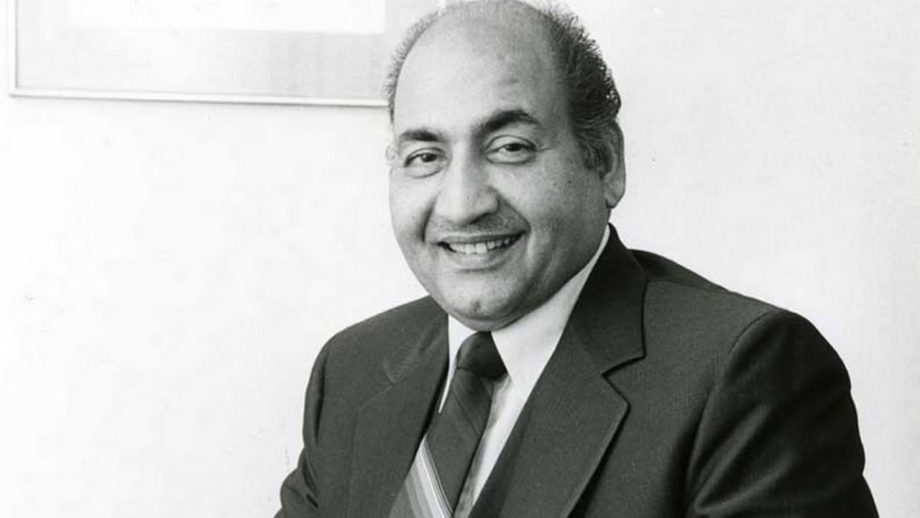“We had some good times together,” recalled the legendary Lata Mangeshkar about Rafi. “We had our little differences. But he was a very simple and uncorrupted man.”
Rafi had a strong command over Hindi and Urdu and a powerful range that could accommodate anything from the sublime O duniya ke rakhwale for Bharat Bhushan in Baiju Bawra to the eccentric Badan pe sitare lapete huey for Shammi Kapoor in Prince.
He never really had to rough it out. Success was his from almost the start. Born in 1924 in an area that today lies in Pakistan, Rafi moved to Lahore at the age of 14 to learn classical music. Discovered by Radio Lahore he used to lend his voice for the station when he started out. It was in 1944 that he sang his first film song in Punjabi.But superstardom came his way when Naushad noticed him and picked him up for some compositions.
Naushad first used Rafi’s voice for Pehle Aap in 1944. Two years later, Rafi’s duets with Noorjehan in Anmol Ghadi catapulted the singer to the top league where he remained for the next 25 years, singing many of his most popular songs with the invincible Lata Mangeshkar.Every composer, big or small, used Rafi’s indomitable vocal range to great advantage. But his tuning with Naushad and Shankar-Jaikishan was undoubtedly special.
While Naushad made sure that Rafi became the ghost voice of the 1950s’ superstar Dilip Kumar, Raj Kapoor preferred Rafi’s contemporary Mukesh and Dev Anand was more comfortable with Kishore Kumar.But, among the titanic trio, only Rafi could cut across the image barrier to sing for every face and occasion. He was as comfortable doing a seduction song like Kis se pyar karoon for Shammi Kapoor as he was singing a sad song Babul ki duayen for Balraj Sahni.
Rafi’s voice went a long way in shaping Shammi Kapoor’s superstardom.From the time Shammi Kapoor zoomed into stardom with the jungle call of Yahoo, chahe koi mujhe junglee kahe, Rafi became an integral part of India’s first screen icon to have a wild sexy image, belting out one hit after another until the star and the voice became one in the public’s mind.
Another star whose image went a long way through Rafi’s voice was Rajendra Kumar for whom the singer sang sober ballads like Teri pyari pyari soorat and Baharon phool barsaao.Rafi ruled the charts throughout the 1960s. At the end of the decade, Shammi Kapoor was out. A new superstar named Rajesh Khanna spun into sight. And Khanna preferred Kishore Kumar’s voice.It’s ironical that the song that made the Khanna-Kumar pair a national rage was Mere sapnon ki rani in Aradhana. Twenty-three years earlier, Rafi had soared to new heights with a song of the same title in the film Shahjehan.
Rafi’s era clearly ended in the 1970s. The final insult to the tremendous titan was to have his version of Tum bin jaoon kahan in the film Pyar Ka Mausam overpowered in the charts by Kishore Kumar’s version.Rafi struggled on, singing occasional hits throughout the 1970s and even making a tentative comeback with Laxmikant-Pyarelal’s entire score inSargam along with Lataji.
Rafi’s last recordings were for Laxmikant-Pyarelal in the film film Aas Pas.He had a heart attack and died on July 31, 1980, leaving behind a rich legacy and a son who has not followed in his father’s footsteps. Not many people know that Rafi also acted in some films like Jugnu and Mela in the 1940s. His benevolence and charitable nature are still talked about in the industry.

